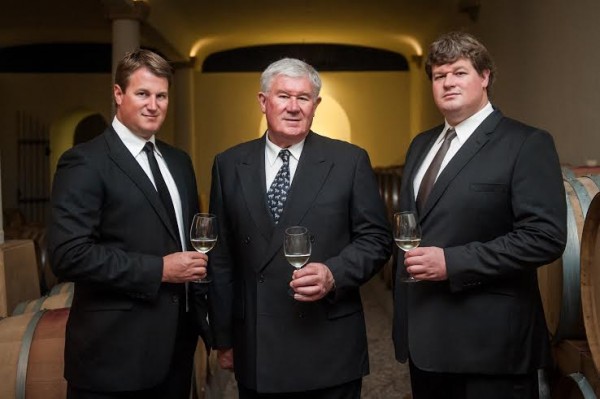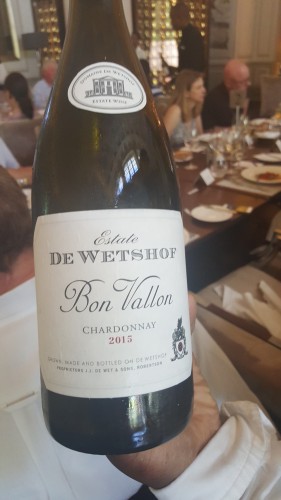De Wetshof Estate, the pioneering South African Chardonnay producer in Robertson, has released a newly packaged set of wines to give each of its site-specific Chardonnays an own identity, as well as to present De Wetshof’s Cape Vintner Classification accreditation.
Top image caption: Johann, Danie and Peter de Wet
The new-look is found on De Wetshof’s Bateleur, The Site, Finesse, Limestone Hill and Bon Vallon wines, all established Chardonnays expressing individual characteristics and an own personality in terms of vineyard site and winemaking.
According to proprietor and cellarmaster Danie de Wet, De Wetshof has committed to displaying the diversity within its range of Chardonnays. “Being a grape variety that expresses site, soil and climate like few other – only Pinot Noir and Riesling can compare – De Wetshof has always been a Chardonnay house with five separate and unique rooms. Chardonnay is the golden thread, but each wine has its own voice due to its geographical origin, clonal selection and winemaking style, creating wines with an expression of site.”
To date, all five Chardonnays have separate identities reflecting site specificity as well as a loyal following from consumers due to the respective flavour profiles.
Together with the recent CVC accreditation accorded to De Wetshof’s Chardonnay wines, the new labels allow the Estate to place a stronger emphasis on each wine’s individuality and unique character and communicate this to the consumer.
The labels were designed by leading graphic designer Anthony Lane. Featuring the De Wet family crest as the common feature, each label varies in terms of font and visual effect.
“We have gone back to tradition by bringing in the family crest on each bottle as well as the use of strong elements of European wine culture,” says De Wet. “At the end of the day it really is about what is inside the bottle, but with each of the five Chardonnays adorning a new cloak De Wetshof is underscoring its commitment to diversity within our Estate.”
For the first time all five wines will be donning the official CVC seal. De Wet, one of the pioneers of the CVC body, says as a body the CVC is about elevating the status and creating an awareness of South Africa’s premium wine sector.
“It is all about creating a standard for South Africa wines originating from site-specific vineyards and that have obtained provenance and pedigree,” says De Wet. “CVC members have to be registered estates and must conform to the highest standards of cellar practices (Integrated Production of Wine), labour relations, cellar-door offerings and, of course, vineyard management.”
The Bateleur 2013 carries the CVC’s highest level of terrain-specific accreditation, namely Superior. The Site 2014, Finesse 2014, Limestone Hill 2015 and Bon Vallon 2015 carry the status of Vineyard Wines owned or managed by the proprietor.
Besides the CVC’s rigorous requirements, each wine aspiring to accreditation has to have five vintages presented to an independent panel for tasting. Superior wines have to acquire 18/20 points or above for four of the five wines, while Vineyard Wines must score at least 16/20 for four of the five submitted.
“Being one of the founder members of the CVC, De Wetshof is going into uncharted waters with the new accreditation but as the other members we are sure that this certification and everything it represents is about to herald a new era for South African wine in terms of image and recognition for exceptional quality, as well as the aforementioned requirements to ensure responsible and sustainable wine production, says De Wet. “We are thus honoured to introduce the CVC seal of approval of our membership, together with a new De Wetshof image.”





